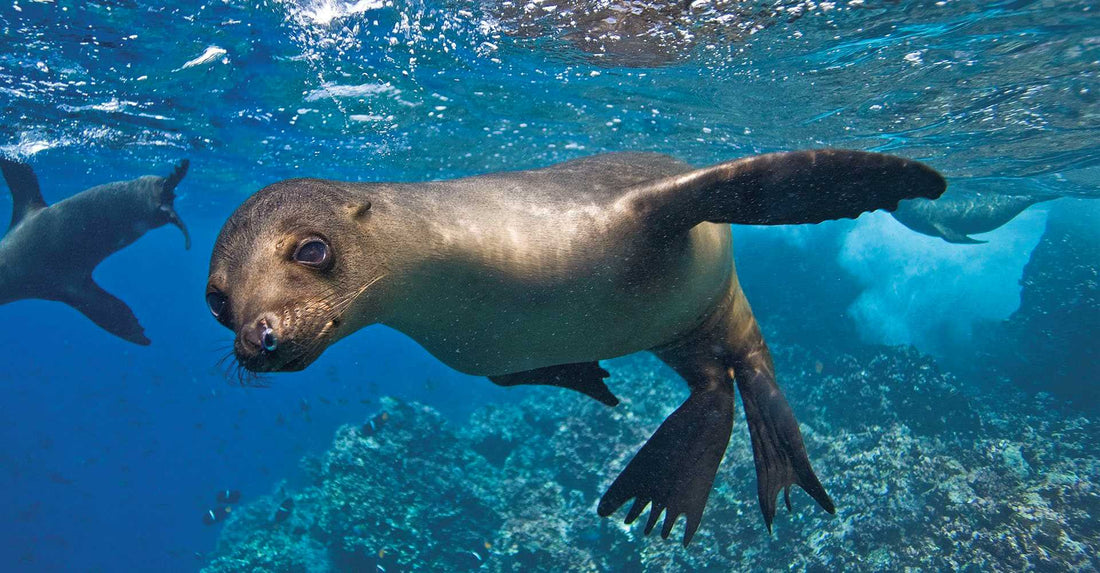The Galápagos Marine Reserve is an awe-inspiring underwater paradise nestled within the enchanting Galápagos Islands. Renowned for its incredible biodiversity and unique wildlife, this marine reserve holds a special place in the hearts of scientists, nature enthusiasts, and adventure seekers.
In the last 2 years, Ecuador and Costa Rica have created and expanded the marine Protected Areas between the Galapagos and Cocos Islands. Both countries have created funds to support the proper management of these protected areas.
The Galápagos Marine Reserve stretches from the Ecuadorian mainland all the way north to Costa Rica - an area nearly 3 times the size of New York State.
It’s a #WinForThePlanet 🙌🏼
5 reasons the Galápagos Marine Reserve is awe-inspiring
1. It’s a Natural Treasure Trove
The Galápagos Marine Reserve is one of the largest protected marine areas on the planet. Established in 1998, the reserve encompasses the waters surrounding the Galápagos Islands, a UNESCO World Heritage site. It serves as a refuge for an astonishing array of marine species, many of which are found nowhere else on Earth.
2. Biodiversity Beyond Imagination
The marine reserve's waters are home to an astounding diversity of marine life. From the vibrant coral reefs to the open ocean, the Galápagos Marine Reserve supports a vast ecosystem that sustains an abundance of species. Hammerhead sharks, sea turtles, marine iguanas, penguins, playful sea lions, and majestic manta rays are just a few of the captivating creatures that call this place home.
3. Conservation at the Core
The Galápagos Marine Reserve is a testament to the dedication and success of conservation efforts. Recognizing the fragility of this unique ecosystem, the Ecuadorian government and various organizations have implemented stringent regulations to protect the marine reserve's natural treasures. Strict fishing regulations, including no-take zones and size limits, aim to preserve the delicate balance of the marine ecosystem and ensure sustainable fishing practices. These conservation measures have contributed to the recovery of several vulnerable species and the overall health of the reserve.
4. Research and Discovery
Scientists and researchers from around the world are drawn to the Galápagos Marine Reserve to study its exceptional biodiversity and gain insight into the complex web of life beneath the waves. The reserve provides a rich environment for marine biologists, ecologists, and conservationists to investigate evolutionary processes, monitor marine populations, and develop strategies for effective ecosystem management. Discoveries made here have expanded our understanding of marine ecosystems and informed conservation efforts worldwide.
5. Ecotourism and Responsible Travel
Visiting the Galápagos Marine Reserve offers a unique opportunity to witness nature's wonders up close while supporting conservation efforts. Strict visitor guidelines ensure that tourism activities are sustainable and minimize environmental impact. Snorkeling, diving, and boat tours provide incredible encounters with marine life, while land excursions offer opportunities to observe nesting seabirds, giant tortoises, and unique coastal flora. Responsible travel practices, such as following designated trails and respecting wildlife, are crucial for preserving this pristine ecosystem for future generations.
The Galápagos Marine Reserve is a fantastic example of successful marine conservation, where ecological preservation and scientific discovery work together. This extraordinary sanctuary continues to inspire awe and ignite a sense of wonder in all those who have the opportunity to explore its waters.
Have you visited the Galápagos Marine Reserve or another protected area? We'd love to hear from you in the comments.


1 comment
I’ve never visited but you can rest assured I would love to. I suppose the best way to find out how, where to go, the opportunities available would be a travel agent. I’ll research online as well. My little note is not only a thank you for your wonderful email but to also ask if you think of better ways to discover where, how and what time of year would be the best to travel. Galapagos Marine Reserve – different from the “Galapagos” proper I’m sure. But might as well start now learning. I’d not known of the Marine Reserve before.
Many thanks.
Debbie